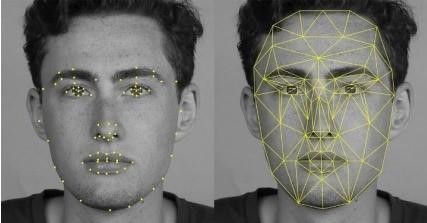A New Way for Face Sketch Construction and Detection Using Deep CNN
Main Article Content
Abstract
Traditional hand-drawn face sketches have encountered speed and accuracy issues in the field of forensic science when used in conjunction with contemporary criminal identification technologies. To close this gap, we provide a ground-breaking research article that is built on a stand-alone program that aims to revolutionize the production and identification of composite face sketches. This ground-breaking approach does away with the requirement for forensic artists by enabling users to easily create composite sketches using a drag-and-drop interface. Utilizing the power of deep learning and cloud infrastructure, these generated sketches are seamlessly cross-referenced against an enormous police database to identify suspects quickly and precisely. Our research study offers a dual-pronged approach to combating the rise in criminal activity while using the quick breakthroughs in artificial intelligence. First, we demonstrate how a specific Deep Convolutional Neural Network model transforms sketches of faces into photorealistic photographs. Second, we employ transfer learning for precise suspect identification using the pre-trained VGG-Face model. Utilizing Convolutional Neural Networks, which are famous for their data processing powers and hierarchical feature extraction, is a key component of our strategy. This approach exceeds current methods and boasts an extraordinary average accuracy of 0.98 in identifying people from sketches, providing a crucial tool for strengthening and speeding up forensic investigations. A unique Convolutional Neural Network framework that demonstrates significant improvements over state-of-the-art techniques is also revealed as we dive into the challenging task of matching composite sketches with corresponding digital photos. Our thorough analysis shows the framework to be remarkably accurate, constituting a substantial advance in the field of forensic face sketch production and recognition.
Article Details
References
Durdona, Irgasheva, Islomov Shahboz, Davronova Lola, and Rustamova Sanobar. “Face Sketch Recognition Threat Model.” In 2020 International Conference on Information Science and Communications Technologies (ICISCT), pp. 1-3. IEEE, 2020.
Tharwat, Alaa, Hani Mahdi, and Aboul Ella Has- sanien. “Face sketch recognition using local invariant features.” In 2015 7th International Conference of (SoCPaR), pp. 117-122. IEEE, 2015.
Galea, Christian, and Reuben A. Farrugia. “Forensic face photo-sketch recognition using a deep learning-based architecture.” IEEE Signal Processing Letters 24, no. 11 (2017): 1586-1590.
Patil, Abhijit, Akash Sahu, Jyoti Sah, Supriya Sarvade, and Saurabh Vadekar. “Forensic Face Sketch Construction and Recognition.” Inter- national Journal of Information Technology (IJIT) 6, no. 4 (2020).
Zhang, Yong, Christine McCullough, John R. Sullins, and Christine R. Ross. “Hand-drawn face sketch recognition by humans and a pca-based algorithm for forensic applications.” IEEE Transactions on Systems, Man, and Cybernetics-Part A: Systems and Humans 40, no. 3 (2010): 475-485.
Zhang, Wei, Xiaogang Wang, and Xiaoou Tang. “Coupled information- theoretic encoding for face photo-sketch recognition.” In CVPR 2011, pp. 513-520. IEEE, 2011.
Wan, Weiguo, Yongbin Gao, and Hyo Jong Lee. “Transfer deep feature learning for face sketch recognition.” Neural Computing and Applica- tions 31 (2019): 9175-9184.
Tang, Xiaoou, and Xiaogang Wang. “Face sketch recognition.” IEEE Transactions on Circuits and Systems for video Technology 14, no. 1 (2004): 50-57.
Durdona, Irgasheva, Islomov Shahboz, Davronova Lola, and Rustamova Sanobar. “Face Sketch Recognition Threat Model.” In 2020 International Conference on Information Science and Communications Technologies (ICISCT), pp. 1-3. IEEE, 2020.
Tharwat, Alaa, Hani Mahdi, Adel El Hennawy, and Aboul Ella Has- sanien. “Face sketch recognition using local invariant features.” In 2015 7th International Conference of Soft Computing and Pattern Recognition (SoCPaR), pp. 117-122. IEEE, 2015.
Dixon, Daniel, Manoj Prasad, and Tracy Hammond. “iCanDraw: using sketch recognition and corrective feedback to assist a user in drawing human faces.” In Proceedings of the SIGCHI Conference on Human Factors in Computing Systems, pp. 897-906. 2010.
Singh, Saurabh, and Madhavi Sinha. “Forensic sketch recognition using user specific facial regions.” International Journal of Biometrics 8, no. 2 (2016): 134-14

